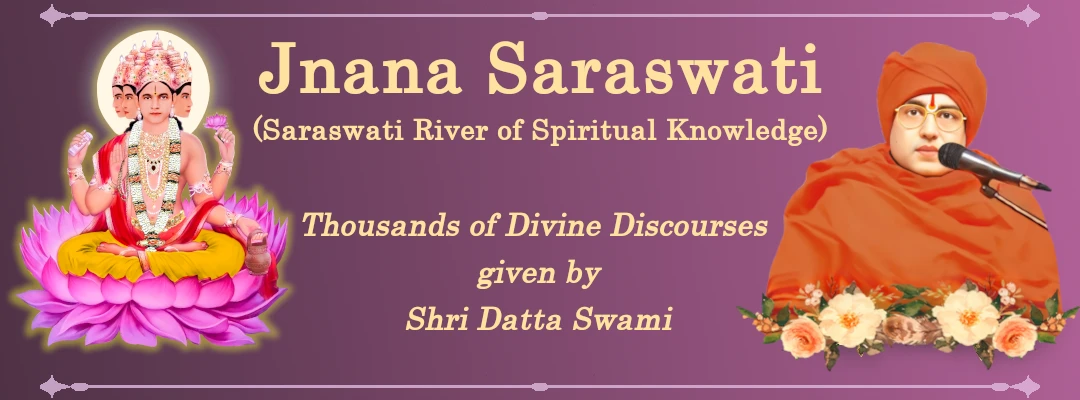
20 Feb 2022
[Shri Balaji asked: Namaste Swami, kindly clarify the following verse in the Mundaka Upanishad on rituals:
Mantra 1:
"Tatetat satyam mantreshu karmaani kavayo...panthaaha sukrutasya loke"
Here, sages are said to have performed the rituals seen in the Vedic Mantras practiced in several ways in the Treta yuga. The verse encourages seekers of truth to follow this path to attain the highest world.
1) What is the significance of the mention of the practice of rituals in several ways in the Treta Yuga? Does it refer to the worship of God in several mediated forms? Is it also referring to the degradation of rituals from the Treta Yuga in various ways like burning ghee in fire and worship of angels instead of mediated God?
2) The verse also asks seekers of the truth to follow this path. Does it mean that even a person who is interested in the spiritual path but not in siddhis, worldly or heavenly fruits is asked to go through this path of rituals which is initially a blind practice (Abhyaasa)? A devotee transitions from the path of Abhyaasa, then Jnaana, through Bhakti and finally to Karma Phala Tyaga as highlighted in the Gita. Should we say that a person who is interested in the spiritual path of Jnaana, Bhakti and Karma yoga, is also asked to take the path of Abhyaasa first? Even such blind performance of rituals may be beneficial since the devotee sees miraculous fruits coming as a result of his blind and sometimes incorrect performance of rituals (like Mandana Mishra who got supernatural powers due to his performance of yagnas). Provided he is not misled by these supernatural powers as the ultimate, this would strengthen his quest for the unimaginable God who is the source of these miraculous fruits and will never put him in an atheistic path since he has experienced miracles as a result of his rituals. As against this, if an average worldly person (any religion or culture) directly enters the spiritual path starting directly with Jnana, his faith is not so strong since he has not experienced miracles strongly like the performer of rituals. So, it becomes a question of who attains the Grace of God between 2 types of devotees who are both in the initial stage of incomplete devotion. One, the blind ritualist, whose faith in the existence of unimaginable God is strong but may have a lot of ego due his superpowers, and the other, a devotee (average worldly person) whose ego is less due to lack of superpowers but his faith may not be strong and he may slip more easily from the spiritual path into worldly enjoyments. Sincerely, Balaji]
Swami Replied: Mandana Mishra is the incarnation of God Brahma, Who is acting in the role of opponent to Shankara, Who is the incarnation of God Shiva. Shankara never performed any ritual, but, still, is an ocean of miraculous powers. Similarly, Mandana Mishra is also an ocean of miraculous powers because He is the incarnation of God Brahma, Who Himself is God Shiva. Mandana Mishra incarnated to discuss the topic deeply with Shankara so that any scholar in this line cannot have any further new argument. Since Mandana Mishra is one and the same with Shankara, Mandana Mishra finally agreed to the defeat. The defeat is not that of Mandana Mishra, but, is the defeat of the school of Puurva Miimamsa or doing rituals blindly without studying them in-depth (Abhyāsa). The Gita says that instead of blind recitation of the Veda and instead of blind performance of rituals, the study of the Veda in-depth and performance of rituals with full understanding is always far better (Śreyo hi jñānamabhyāsāt…, Jñātvā kurvīta karmāṇi).
Performing rituals is not condemned by Shankara. In fact, performing action or Karma Yoga is the final step to please God. Only blind performance of the ritual is condemned and not performing the ritual with full understanding of its background (Kurvanneveha karmāṇi – Veda). How much practical activity was done by Shankara, Who travelled thrice from Himalayas to Kanyakumari in establishing the true spiritual knowledge? Shankara did more practical work than Mandana Mishra who was sitting in His house and burning the ghee in the fire! This way of doing ritual is bringing anger in the heart of God and also brings lot of sin in burning the precious ghee-food. The lack of knowledge of words turned this ritual into the generator of lot of sin. The physical fire is used to prepare ghee-fried food. The fire in which the ghee-food is to be burnt is not the physical fire, but, is the divine fire called Vaiśvānarāgni that burns in the stomach in the form of hunger. The word ‘ghee’ means the food associated with ghee, which is very easily understood by lakṣaṇā or implied meaning, which is not the literal meaning. See, how much loss is taking place in this ritual due to the lack of perfect knowledge of the ritual and due to blind traditional practice! The pollution caused by burning the ghee is stopping the rains whereas, the ghee-food eaten by the scholars of spiritual knowledge is generating rains as said in the Veda itself (Yāvatīrr vai devatāḥ…). Hence, performing the rituals is not condemned by Jnana Yoga or spiritual knowledge. Only wrong performance of the ritual following blind traditions of foolish tape recorder – priests is condemned. Shankara never asked to leave the rituals, but only, asked to perform the rituals in right sense as told in the Gita (Tayostu karma sannyasāt karmayogo viśiṣyate…, Na karmaṇāmanārambhāt…, Na ca sannyasanādeva etc.). Karma Samnyaasa (in the sense of leaving rituals) is burning the house due to presence of rats. Karma Yoga means removing the rats using rat boxes. Removal of rats from the house is recommended, which is removal of defects causing sins in a ritual.
★ ★ ★ ★ ★